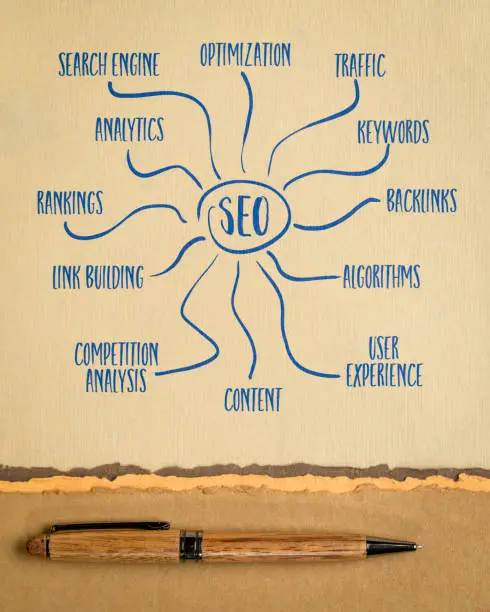Having a strong online presence is not just an option; it’s a necessity for small businesses aiming to thrive. With the entire world connected through the internet, online channels offer a vast and diverse market reach.
According to recent research, over 81% of consumers conduct online research before making a purchase decision. Therefore, establishing a robust online presence allows small businesses to tap into this growing pool of potential customers and compete on a level playing field with larger enterprises.
By embracing digital marketing and implementing effective growth strategies, small businesses can build brand awareness, reach their target audience more efficiently, and ultimately boost sales and revenue. In a highly competitive market, an engaging and well-crafted online presence can be the key differentiator that sets a small business apart from its competitors.
In this blog, we will uncover a comprehensive set of strategies specially designed for small online businesses that require little to no significant financial investment. By following these actionable steps, you will be equipped to harness the power of the digital landscape and propel your small business towards rapid growth and success.

We’re reader-supported. We collaborate with exceptional companies providing products that assist our readers in reaching their goals! When you make a purchase through our partner links, we receive a referral fee at no extra cost to you. For further details, please visit the affiliate disclosure on our Disclaimer page.
1. Market Research on Your Target Audience and Their Needs

Market research is the foundation of any successful growth strategy for small online businesses. It involves gathering valuable insights about your target audience, their preferences, pain points, and purchasing behavior. By understanding your audience, you can tailor your products or services to meet their specific needs, increasing the chances of attracting and retaining loyal customers.
Through surveys, focus groups, and online analytics tools, you can gain valuable data on customer demographics, interests, and online behavior. This information will help you create detailed buyer personas, representing your ideal customers, allowing you to effectively target and engage with them.
To read more on Market Research Check The Importance of Market Research for Small Online Businesses
2. Get on your Target Audience’s face

Create content that resonates with your target audience is the cornerstone getting on your target audience’s face.
Social media has become an indispensable tool for small online businesses to connect with their target audience and build brand awareness. However, not all social media platforms are created equal, and it’s essential to focus your efforts on the ones that align with your business goals and target demographic.
Start by understanding your ideal audience and their preferences. Research which social media platforms they frequent the most and where they engage with content relevant to your niche. For instance, if your business caters to a younger audience, platforms like Instagram and TikTok might be more effective, while LinkedIn could be suitable for a B2B-focused business.
By choosing the right platforms, you can concentrate your efforts on reaching the audience most likely to engage with your content and convert into loyal customers.
3. Connect Emotionally with Customers through Storytelling

Telling a compelling brand story is a powerful way to connect with your audience on a deeper, emotional level. Share the journey of your small business, its purpose, and the passion that drives you. By humanizing your brand, customers are more likely to relate to your story and develop a sense of loyalty towards your business. You can put this information in your about section.
Craft your brand story in a way that resonates with your target audience, addressing their pain points and aspirations. Utilize storytelling techniques in your content marketing efforts to evoke emotions, inspire action, and foster a sense of community among your customers. A strong emotional connection with your brand enhances customer engagement and encourages them to become brand advocates.
To read more on Connecting with customer Check 5 Effective Strategies to enhance the Human Touch in Small Online Businesses
4. Create a Unique Selling Proposition (USP)

With a deep understanding of your target audience and a thorough analysis of your competitors, you can now craft your Unique Selling Proposition (USP). Your USP is the factor that sets your business apart from others in the market and communicates the unique value you offer to your customers.
To create a compelling USP, focus on what makes your products or services unique, how they address the specific needs of your target audience, and why customers should choose your business over others. Emphasize the benefits and value your business provides, making it clear why your offerings are superior or distinct.
5. Prioritize User Experience
Fast Website and Simple Design
In the digital age, where attention spans are short, users expect a seamless and intuitive browsing experience. A user-friendly website design is crucial for small online businesses as it directly impacts user satisfaction and engagement. A cluttered or confusing layout can lead to frustration, causing visitors to abandon your website and seek alternatives.
Ensure that your website is easy to navigate, with clear and intuitive menus that guide users to the information they seek effortlessly. If your website looks like it was made in the stone age like the one below then you come of as Spam.
Optimize your website’s loading speed by compressing images and minimizing unnecessary elements. No one wants to use a slow website; they will quickly leave and explore other options.
Here is my list for the Best Web Hosting services to get for fast loading speeds and more.
Optimize for Mobile Users
The prevalence of mobile devices makes it imperative for small businesses to embrace mobile responsiveness. A large percentage of online users access websites through their smartphones and tablets. If your website is not mobile-friendly, you risk losing potential customers who are unable to access your content or make purchases conveniently.
Invest in responsive web design to ensure that your website automatically adapts to different screen sizes and devices. I recommend using Elementor when you are building your website on WordPress because it optimizes your site for mobile users automatically.
Mobile responsiveness not only improves user experience but also positively impacts your search engine rankings, as search engines prioritize mobile-friendly websites.
Shorten Checkout
A lengthy and complicated checkout process can be a significant barrier to conversions. If customers encounter difficulties during the checkout process, such as multiple form fields or unexpected fees, they may abandon their shopping carts and leave your website without completing their purchase.
To increase conversions, shorten the checkout process and make it as straightforward as possible. Implement guest checkout options so that users can make a purchase without creating an account. Offer multiple secure payment methods to cater to different customer preferences.
Regularly review your checkout process to identify any friction points and optimize it for a smooth and hassle-free experience. By reducing cart abandonment, you can significantly improve your conversion rates and maximize the value of each visitor to your online store.
This is probably the best tip to grow a small online business in the ecommerce niche.
6. SEO and Backlinks

Search engine optimization (SEO) plays a crucial role in driving organic traffic to your website. By optimizing your content for relevant keywords and acquiring backlinks from authoritative websites, you can improve your search engine rankings and visibility.
Start by conducting keyword research to identify the terms and phrases your target audience uses when searching for products or services related to your business. Incorporate these keywords strategically into your content, including headings, meta tags, and body text, while maintaining a natural and reader-friendly flow.
In addition to keywords, backlinks from reputable websites act as “votes of confidence” in the eyes of search engines, indicating the relevance and authority of your content. Focus on building high-quality backlinks through guest posting, outreach to industry influencers, and creating shareable content that naturally attracts links.
7. Build your Email List from the Start

Email marketing remains one of the most effective and cost-efficient strategies for small online businesses to engage with their audience and drive conversions. To get started, focus on building a valuable email list comprised of interested and engaged subscribers.
Offer incentives such as exclusive discounts, free resources, or informative content to encourage visitors to subscribe to your email list. Implement exit-intent pop-ups or opt-in forms strategically placed on your website to capture leads at the right moment.
Segment your email list based on various criteria, such as demographics, purchase history, or engagement level. This allows you to send targeted and relevant content that resonates with specific groups of subscribers, increasing the likelihood of conversions.
8. Testimonials

Social proof is a powerful persuasion tool, especially in the digital landscape. Displaying genuine customer reviews, testimonials, and user-generated content on your website and social media platforms can significantly impact the decision-making process of potential customers.
Encourage satisfied customers to leave reviews and share their experiences with your products or services. Positive feedback from real customers builds trust and credibility, assuring potential buyers that your business delivers on its promises.
9. Analyzing Data and Metrics

Data is a goldmine of information that can unlock invaluable insights into yoursmall online business’s performance. Utilizing website analytics tools allows you to gather essential data about user behavior, traffic sources, and content performance.
Platforms like Google Analytics offer comprehensive data on website visitors, including demographics, location, and behavior flow. By analyzing this data, you can identify trends, strengths, and weaknesses in your online business strategy.
Identifying Growth Opportunities
Understanding how users interact with your website is crucial to identify growth opportunities. Analyze user behavior data to pinpoint areas where visitors might be dropping off or encountering difficulties.
For instance, you can track the most popular pages, the pages with the highest bounce rates, and the most common conversion paths. These insights will guide you in optimizing your website and marketing efforts to better cater to your audience’s needs and preferences.
Informed Decision-Making
Data-driven decision-making empowers you to optimize your marketing efforts and allocate resources effectively. Use the data collected from various channels, such as social media, email marketing, and content performance, to assess the effectiveness of your strategies.
Identify which marketing channels bring the highest conversion rates and focus on strengthening those areas. Likewise, assess underperforming channels and explore ways to improve their efficiency or reallocate resources to more successful endeavors.
10. Collaboration and Partnerships
Partnering with Complementary Businesses

Collaborating with other businesses can be a powerful way to amplify your reach and enhance your offerings. Seek out partnerships with companies that complement your products or services. For instance, if you sell fitness apparel, consider teaming up with fitness trainers or gyms.
Strategic alliances allow you to tap into each other’s customer bases, share resources, and leverage expertise. It’s a win-win situation that can drive mutual growth while delivering more value to your customers.
Influencer Marketing
Influencer marketing has emerged as a popular and effective strategy for small online businesses. Identify influencers within your niche or industry who have a significant following and align with your brand values.
By partnering with influencers, you can gain access to their engaged audience and build trust more quickly. Their recommendations and endorsements can significantly impact the perception of your brand, leading to increased visibility and sales.
11. Consistent Brand Identity

Here is a bonus tip for your who have made it these far.
In the crowded online marketplace, a strong brand identity is essential for small businesses to stand out and leave a lasting impression on their audience. Consistency in branding across all touchpoints, including your website, social media profiles, and marketing materials, reinforces your business’s image and builds trust with customers.
When developing your brand identity, focus on creating a cohesive visual language with a distinct logo, color palette, and typography. These elements should be consistent across all platforms, reinforcing your brand’s message and values. A memorable brand identity increases brand recall and enhances customer loyalty, making your business more recognizable amidst competitors.
LAST WORDS
Congratulations! You’ve journeyed through the essential strategies that can catapult your small online business to new heights. From understanding your market and building a strong brand to optimizing user experience and embracing content marketing and SEO, you now possess a robust toolkit for success.
Now armed with knowledge, it’s time to take action and implement these proven strategies with confidence. Don’t be afraid to start small and iterate as you go. Remember that success may not happen overnight, but by staying persistent and committed, you’ll pave the way for steady growth.
Your small online business has the potential to thrive in the dynamic digital landscape, and it all begins with putting these strategies into motion.
As you embark on your growth journey, keep in mind that the online business world is ever-evolving. Embrace a mindset of continuous adaptation and learning. Stay abreast of industry trends, customer preferences, and technological advancements.
Remain open to feedback, and don’t hesitate to pivot when needed. The willingness to evolve and innovate will set your small online business apart and ensure sustained growth over the long run.
Now, go forth and conquer the online world with these 11 powerful strategies at your disposal. As you grow your small online business, remember that every step, no matter how small, takes you closer to achieving your dreams. Best of luck on your exciting journey!
Leave a comment on which strategy you will use for your online business.
FAQs To Grow a Small Online Business
- How do you run your small business? Running a small online business requires careful planning and execution. Start by identifying your niche and target audience. Develop a unique brand and focus on content marketing to engage your customers. Utilize social media and email marketing for customer engagement and retention. Regularly analyze data and metrics to make informed decisions and scale your business strategically.
- What program is best for small business? The best program for a small business depends on its specific needs. There are many cost-effective tools and software available for various business functions, such as project management, accounting, marketing, and customer relationship management. Research and compare different options to find the ones that align with your business goals and budget.
- Can a business use free software? Yes, many businesses can benefit from using free software solutions. Several reputable providers offer free versions of their software with limited features, which can be suitable for small businesses with basic requirements. While free software may have limitations, it can be an excellent starting point for businesses with limited budgets.
- How can I start a business with no money? Starting a business with no money requires resourcefulness and creativity. Consider offering services or products that require minimal upfront costs. Leverage your existing skills and talents, and focus on digital marketing to reach your target audience without significant expenses. Collaborate with others to share resources and reduce costs.
What is the first thing you need to start a business? The first thing you need to start a business is a well-defined business idea or concept. Research your target market and competition to ensure there is a demand for your product or service. Create a business plan outlining your goals, strategies, and financial projections. Register your business and obtain any necessary licenses or permits. For More information read CyberLaunch Method
- How do I start my own business from scratch? Starting your own business from scratch involves several key steps. Begin by conducting market research and creating a business plan. Register your business and set up a legal structure. Secure funding or bootstrap your business if necessary. Build a strong online presence through social media and content marketing. Continuously monitor your progress and adapt your strategies as needed.
- How do you run a successful business? Running a successful business requires a combination of factors. Focus on delivering high-quality products or services and exceptional customer service. Build a strong brand identity and engage in effective marketing and promotion. Foster a positive company culture and prioritize employee satisfaction. Continuously innovate and adapt to changing market trends.
- How do I grow my small business into a large business? To grow your small business into a larger one, explore opportunities for expansion and diversification. Identify new markets or demographics to target. Strengthen your online presence through SEO and social media marketing. Consider strategic partnerships or collaborations to reach a broader audience. Invest in scalable technology and efficient processes to support growth.
- How can I succeed in business fast? Success in business doesn’t happen overnight, but there are strategies to expedite growth. Stay focused and disciplined in your business goals. Prioritize customer satisfaction and engagement. Be adaptable and willing to embrace innovation. Network and collaborate with other industry professionals. Continuous learning and improvement will contribute to faster success in your business endeavors.





